There is nothing much better than the time spent for nourishing your kid and of course for a few it may not always be easy, but understand that its always worth it to breast feed. To discuss the concept in a more practicable manner, I have identified few of the most common queries and doubts that prevails amongst the lactating mothers. Let’s approach them one by one.
When does breastmilk starts its production? Does the size of breasts affect milk production? When to start caring my breasts? Colostrum – Boon or Bane? When to feed my child? What is the correct method of feeding? What is the importance of burping? Is my baby sufficiently fed? Am I producing enough breast milk? When should I not feed my child? How long need I breast feed? What if I am a working mother?
C’mon..let’s answer them !
When does breastmilk starts its production?
Even though the breast tissues as well as the lactiferous ducts (that which carries breastmilk) attains its development during pregnancy period itself, it is only after giving birth to a baby that you start production and secretion of breastmilk. Breastmilk is always species specific and baby specific – which is mainly promoted by continuous sucking stimuli from the baby, the vision, touch, thinking, holding her baby and because of the love and care that the mother has towards her baby – which indicates the psychological wellness of the mother, the hormonal influence maintaining a strong hypothalamo-pituitary-mammary axis. This is why almost many of the lactating mothers, during the initial 3 to 4 days, lacks sufficient milk ejection and later the issue itself being solved. Of course, the nutritious diet, comfort of the mother and the child as well as the disease-free state in them has their role to play too.
Does the size of breasts affect milk production?
For a few babies who are born prior to the completion of term, for a few at term and for those few who are post term – you can observe all mothers starts secretion of breastmilk and is allowed and encouraged to feed only breastmilk to their babies. This is because the nature itself has provided sufficient nutrients in breastmilk needed for that particular mother, at that point of gestation, at that distinct season, for her own baby and that makes the breastmilk baby specific. And of course, the production and secretion of breastmilk is irrespective of the size of breasts of mother but actually dependent on the sucking stimuli of baby, hormonal influence and the psychological wellness of mother.
Qualities of the ideal breasts as per the Ayurvedic references says, breasts which are not too highly situated, not too long and pendulous, not too emaciated, not too obese, having normal projections of the areola and nipple and is easy and comfortable for the baby to suck, is considered best. There are explanations of the highly situated breasts leading to difficulties in feeding, also may bring in vision disorders in the child, pendulous breasts that causes stiffness of the shoulders and blocks the nasal cavity which may lead to sudden death of the baby too (as the milk may pass on to wind pipe (trachea) instead of food pipe (oesophagus)).
When to start caring my breasts?
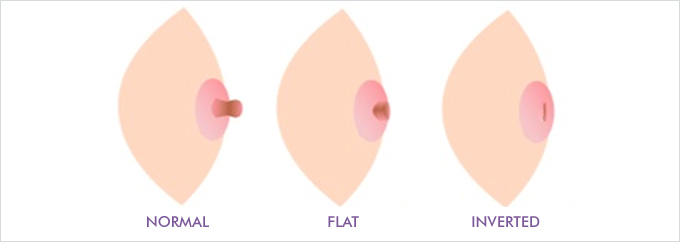
It is obvious that people start caring these private parts during their early puberty itself and that is really appreciable too. But considering breastfeeding, I insist that every mother, during their antenatal check ups itself, should start caressing and nurturing your breasts, as you may be able to identify few related issues and intervene immediately to have a pleasant and peaceful breastfeeding experience. You may approach and seek help of an Obstetrician for appropriate methods of care – may be in cases of inverted nipple, flat nipple, cracks in the nipple or any other major and minor irregularities noted. “If you snooze, you lose” – Yes!!! Don’t hesitate to clear your doubts with a Doctor, may it be right or wrong – just clearing your doubts do not lose a penny of yours.
Colostrum – Boon or Bane?
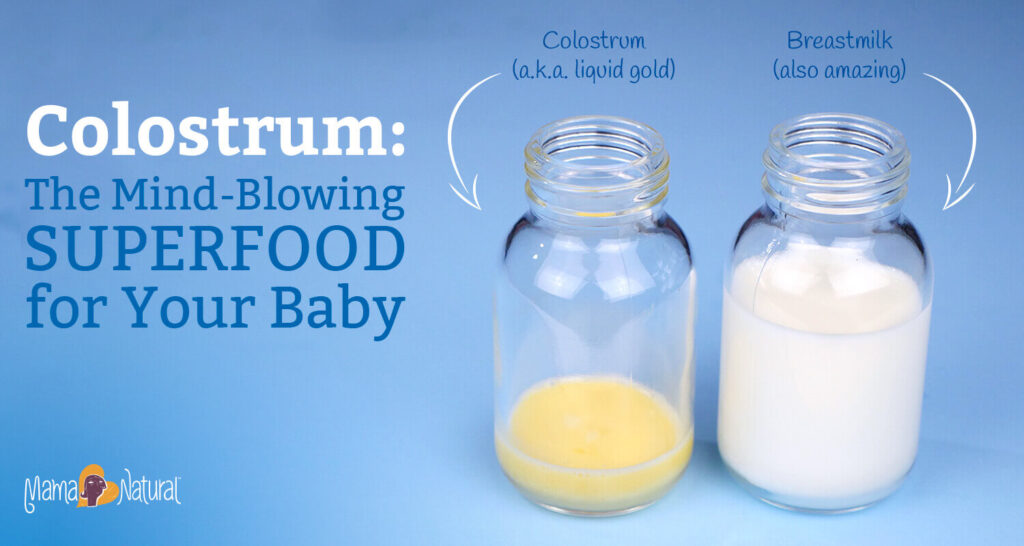
Colostrum is a thick, sticky, yellowish secretion, rich in carbohydrates, high in protective proteins and antibodies, but low in fat (as it may be difficult to digest fat by a baby’s digestive tract). It has a mild laxative action, which enables early passage of baby’s first stools – the meconium, also ensures the protection of mucous membranes in throat, lungs and intestines of an infant. It provides sufficient growth promoting factors and enormous immune builders, preparing the child to resist various infectious disorders. Hence, it is considered the best to feed child and names as “The Liquid Gold” – “Piyusha” in Ayurveda. It should never be discarded but fed to our tiny man to prepare him/her – self to be healthy.
When to feed my child?
It is preferred to initiate feeding (feeding child for the first time), within half an hour to one hour of birth of the baby as it helps the baby to get benefits of colostrum early enough. Moreover, it makes the mother feel more confident regarding breast feeding, increases the divine bond between mother & baby and slowly helps to establish efficient lactation. In India, it is only 42% of the mothers that initiates feeding within one hour of birth and considering its importance, one should encourage early initiation of breast feeding. This can also help in reducing the neonatal mortality rate (rate of death of baby in first 28 days of live per 1000 live birth), which was reduced by 22% by now.
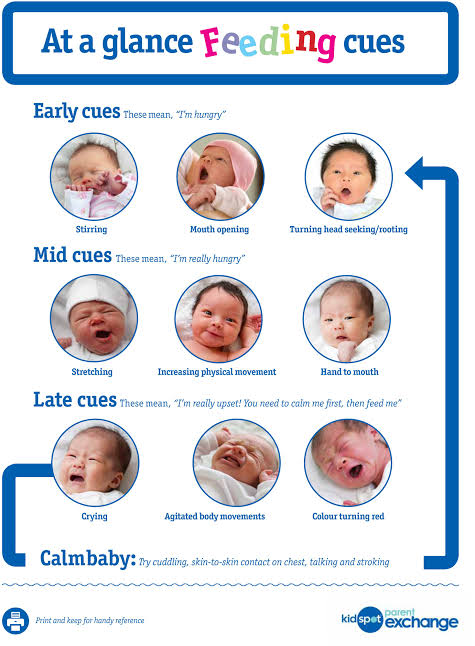
Later, new-borns are usually fed on observing the feeding cues – which are the early hunger signs shown by the baby, prior to the actual cry of hunger. They include the early feeding cues like licking lips, opening of mouth, turning head; mid feeding cues like body movements of the baby like stretching, wiggling, hand to mouth movements and the late feeding cues like fussiness of baby, turning red and at last, resulting in the cry of hunger. That means, a mother should be able to keenly observe and care the child, so that she can feed before the actual cry of hunger. Remember, no pre lacteal feeds or liquids are needed before feeding the child.
You might have observed your Paediatrician, suggesting to feed once in 2 hours, as it is an approximate time for all babies to feel hunger after a complete feeding is done. Hence, each lactating mother is advised and encouraged to feed once in 2 hours without fail.
What is the correct method of feeding?
Even though there are many methods that can be adopted while feeding, most mothers use the “cradle hold” method of feeding. What ever is the method adopted, one should ensure comfort of mother and child as well as the hygienic aspects of both. During initial one or two days, in case of a caesarean section, lying down method of feeding is suggested where as in case of multiple delivery (like twin babies), Rugby ball hold method of feeding is preferable.
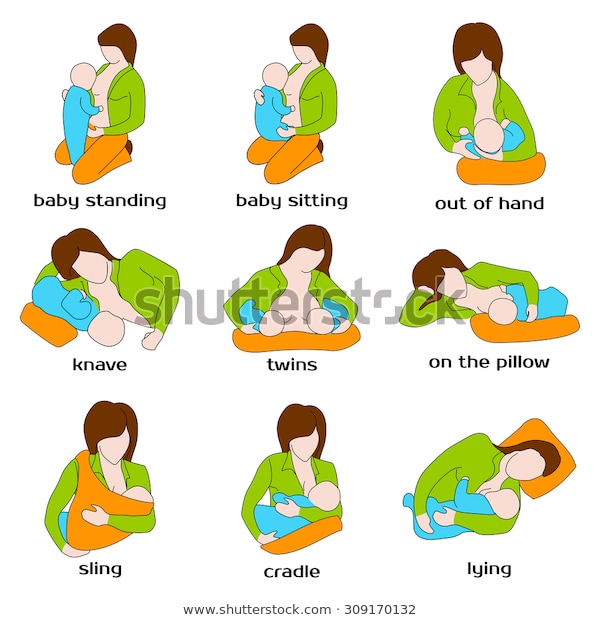
I would like to explain the “Cradle hold” method of feeding, as it is more advised and practised among lactating mothers.
- Mother should be in a comfortable sitting posture, maintaining hygiene of the breasts, areola and the nipple
- Hold the baby, preferably with minimal outfits (as the warmth of more outfits can make the baby go to sleep), head supported by elbow, back of the baby supported by forearm and the buttocks of baby supported in your palms
- In cradle hold method, if you are to feed the right breast, your right hand should hold the baby – making head and back of baby in a straight line, positioning baby towards the mother, maintaining an angle of 45 degree approximately. More of the pressure should be towards your abdomen now. The caressing touch, vision of her baby, sounds and holding her own baby itself starts secretion of breast milk along with a pleasant mind of mother
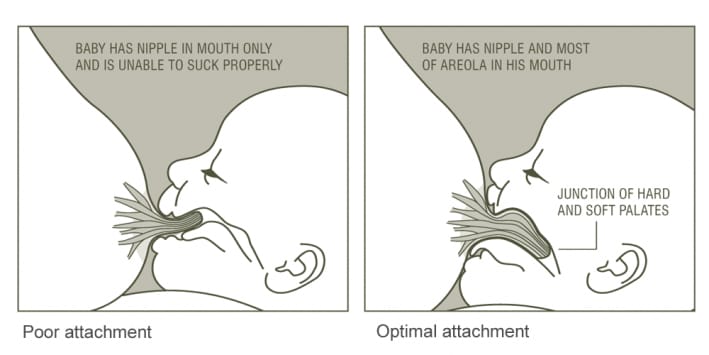
- Coming to the latching or attachment, the nose of the baby should be in line with the mother’s nipple, maintaining a semi reclining posture of the baby, the mother should tickle her nipple around lips of baby so that baby opens his mouth wide enough to introduce your areola and nipple, to the maximum possible limit. Only when appropriate latching has happened, that is, when the lower lip of baby is pulled outwards, chin touching mothers’ breast, maintaining the posture of feeding, the baby starts sucking efficiently.
- You can see the sucking of the baby by careful observation of cheeks of baby – filling in milk first and then swallowing the same, that is a beautiful moment which provides self-satisfaction and brings in enormous happiness too
- An approximate of 15 – 20 minutes is needed for emptying of one breast where as it can be continued with the opposite breast (if baby demands it). Next time you feed, remember to allow the opposite breast first, which is partially filled and then you can continue with the other
- Sufficient intake of milk, makes the baby leave the breast by itself and that indicate satisfaction of hunger, further making the baby sleep for nearly 2 to 3 hours undisturbed
- One should clean the mouth of baby and the surrounding areas as well as the breasts of mother, after feeding
Remember, breast feeding is comfortable and pain free usually, if you feel so, don’t forget to approach you Doctor.
What is the importance of burping?
Feeding is always incomplete without doing appropriate burping. This is because, along with the feeds, some babies swallow air to fill up the abdomen. This load of air, if allowed to accumulate, on a later course, produces distention of abdomen, pain and irritability in baby, making body movements and producing regurgitation of feeds, which usually referred as vomiting after feeding by parents. This condition usually happens at the evenings (after accumulating the air sufficiently) making it popular as “the evening colic”. To prevent this, one should advise appropriate feeding and burping techniques, burping to be done after each feed.
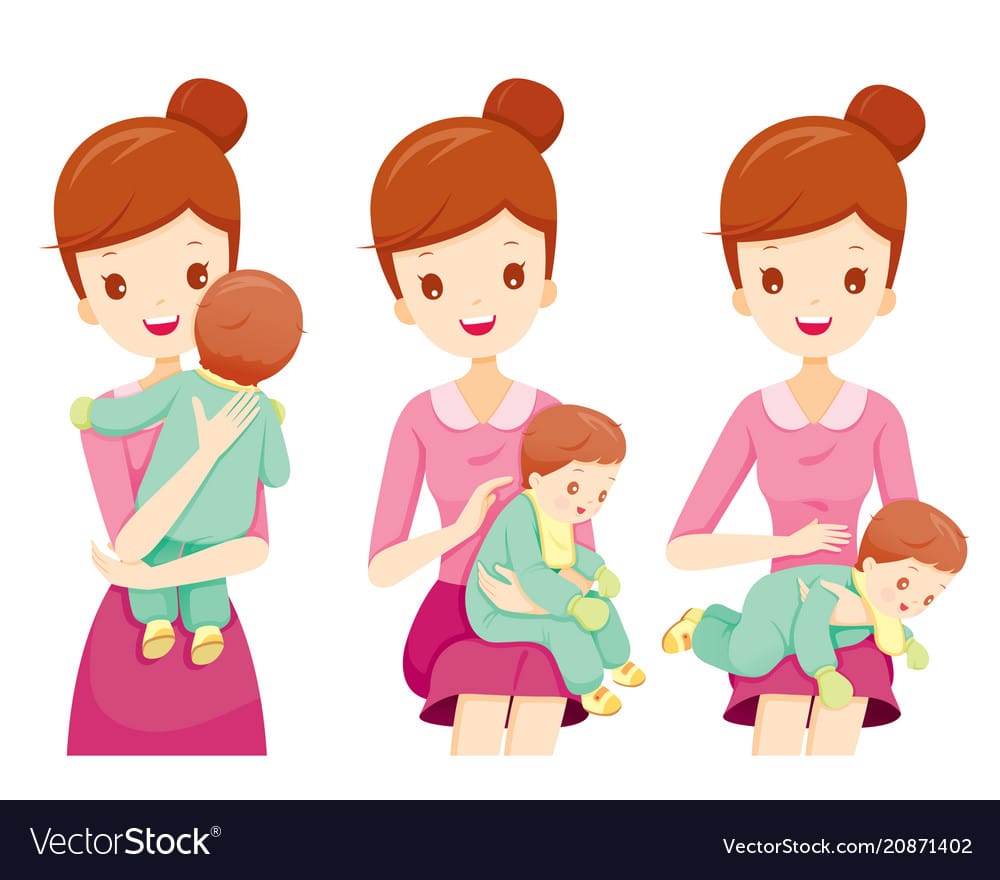
Baby after feeding is gently put on your shoulders, baby’s abdomen on your shoulders and head leaning on to your upper back. Gently tap the baby’s back, so that the baby’s abdomen is pressed towards shoulders, making the accumulated air/gas, relieved in form of belching or flatus. There are other methods by which the baby is kept on lap, supporting his abdomen by palms and performing burping. Most of the time, baby enjoys doing the same, but be cautious to be gentle enough – always in dealing with the baby. It takes an approximate of 5 to 10 minutes for babies to burp and sometimes they don’t even burp efficiently. But never stop burping after each feed.
Is my baby sufficiently fed? Am I producing enough breast milk?
Sufficiency of production and secretion of milk is understood by few easily noticeable criteria. They are:
- After sufficient feeding, all babies sleep undisturbed, for an approximate of 2 to 3 hours
- Urine output of more than 6 times
- Semi solid stool output for more than 3 to 4 time
- Baby being playful and active
- Baby having a steady weight gain of 30 to 40 grams a day, in the initial 3 months
- Dribbling of breast milk from opposite breast of mother during feeds and after feeding
When should I not feed my child?
As per Ayurvedic science, one should restrict feeding her baby, when she is afflicted with excessive hunger, when depressed, when exhaust by work, when afflicted with disorders, when pregnant again, when affected with any infectious disorders, when mother is too emaciated or too obese, having consumed more burnt, hot and spicy food stuffs, who having consumed incompatible food and even before the digestion of any medicines consumed (due to fear of interaction and secretion through breastmilk reaching the baby). Analysing all of the above, pone should understand that how much carefully was breastfeeding being suggested by our ancestors – considering the mother’s nutrition, physical and mental wellbeing.
How long need I breast feed?
Considering the development of brain cells, as maximum development of brain happens between birth and 2 years, the minimum age for breastfeeding is considered as 2 years. You can even continue the feeding after 2 years, if baby actually demands for it. It also indicates that maximum attainment of milestones occurs by 2 years of age. When I say up to 2 years, in the first 6 months, the baby should be exclusively breast fed (without any supplementation or water intake) and later feeding is provided with adequate supply of weaning food as breastmilk will not be sufficient to provide nutritional demands of the growing baby later.
Benefits of breastmilk
For mother
- Decreases the bleeding after delivery (PPH)
- Reduces depression & stress
- Reduces risk of Diabetes, ovarian and breast cancer
- Promotes weight loss
- Creates a bond between mother and child
- Acts as a temporary method of contraception
For baby
- Provides sufficient warmth
- Easily available, safe and pure
- Increases maternal bondage
- Promotes brain development and vision
- Prevents infectious disorders
To society
- Is economical, safe, easily available, pure
- Decreases the burden to society
- Reduces maternal mortality rate by 20000 every year
- Reduces infant mortality rate by 8 lakhs a year
What if I am a working mother?
Working mother, spending much time at work place can
- Freshly express or pump out milk to store at a room temperature up to 4 hours, store in a refrigerator up to 4 days and stored at freezer up to 6 to 12 months and make use of the same as per the need
Or
- If mother’s milk is not available, Ayurveda explains “Dhatri”, as the next option. This is a method by which you prefer to feed your child with the milk of other lactating mother who has given birth at the same time – but after proper examination or fulfilling of the criteria mentioned. This method of feeding is compared to the newer concepts of Human breast milk banking
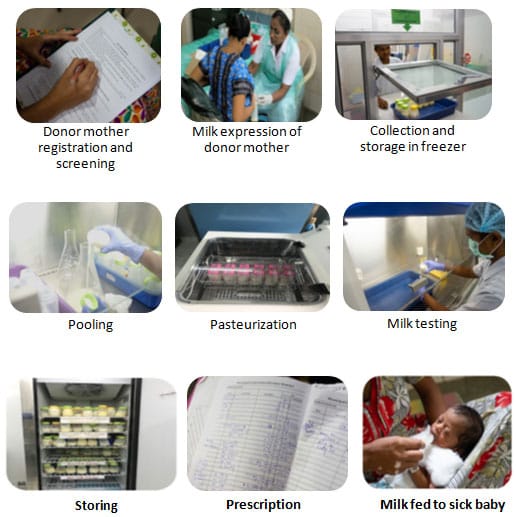
- Various animal milk or soya milk providing concepts also persists which are not usually practised now a days as many go for formula feeds which are readily available
Let me repeat again,
“No other mothers’ milk, no animal milk, no formula milk can mimic the breast milk of mother”.
Hope this blog was worth reading for many lactating mothers.
I support, promote and protect breastfeeding, hope you too will…

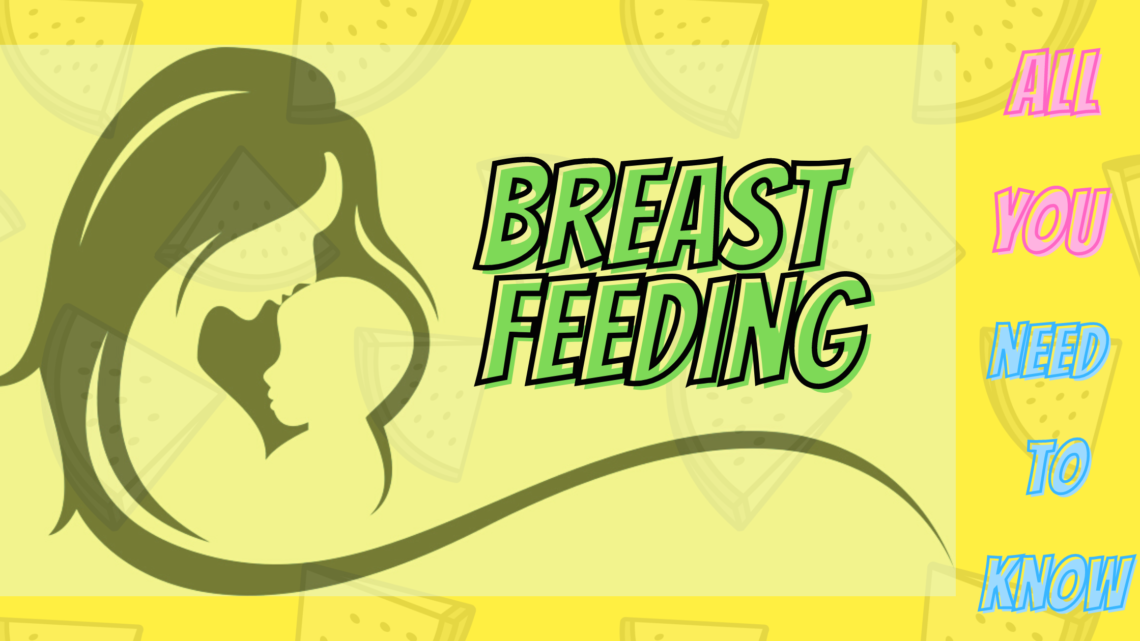
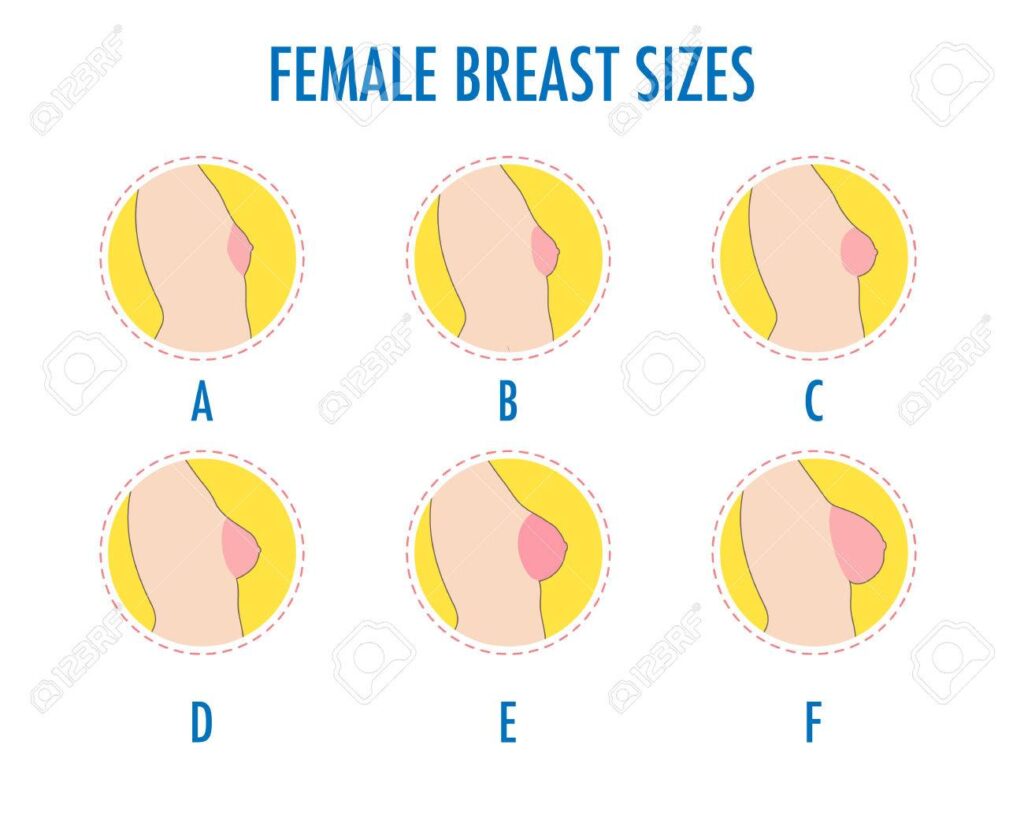
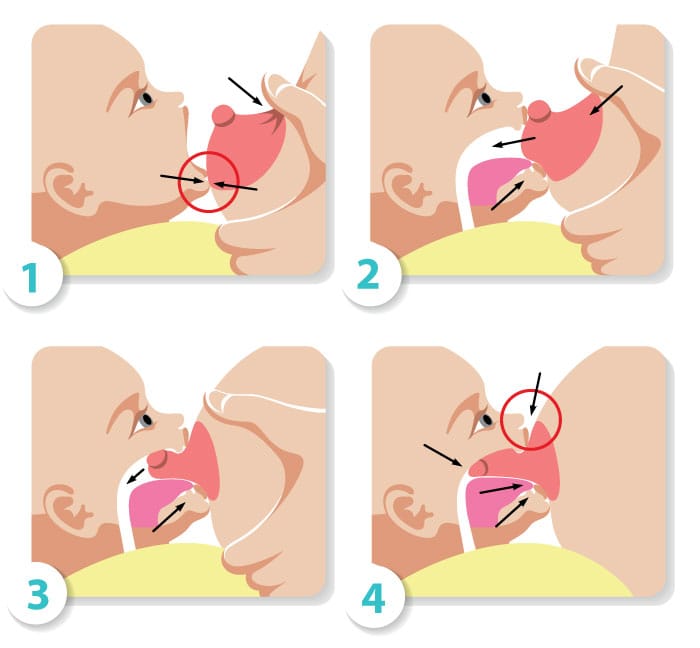
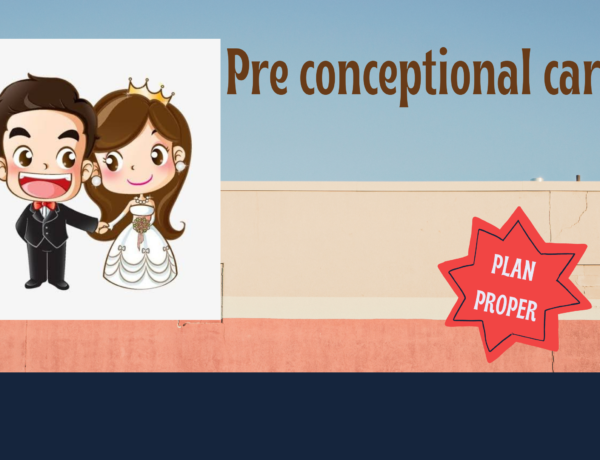


No Comments